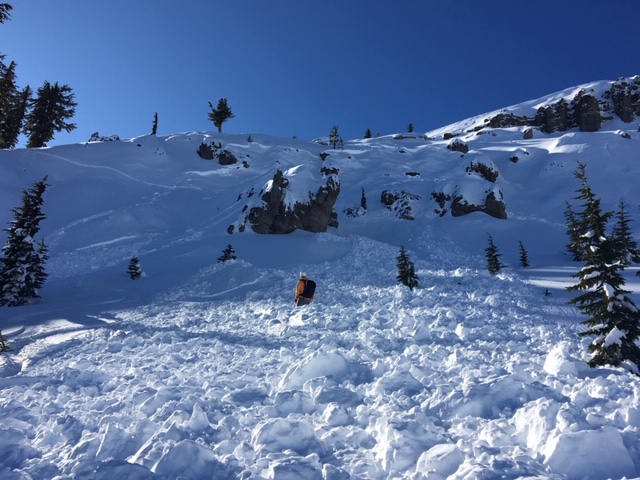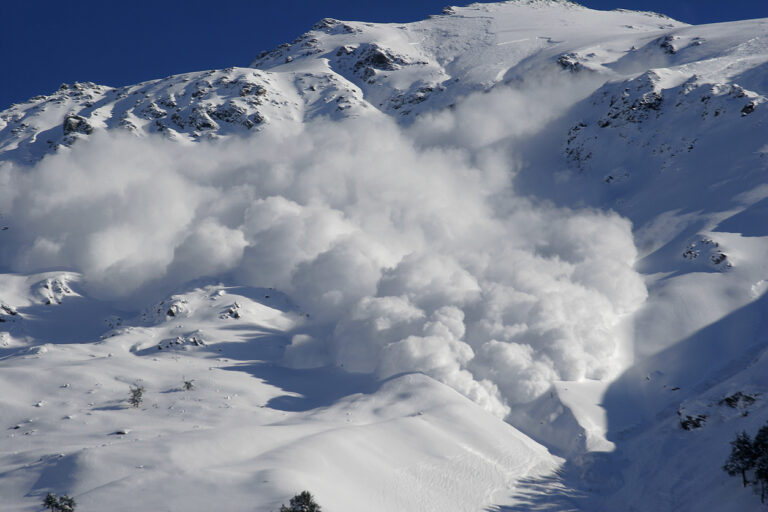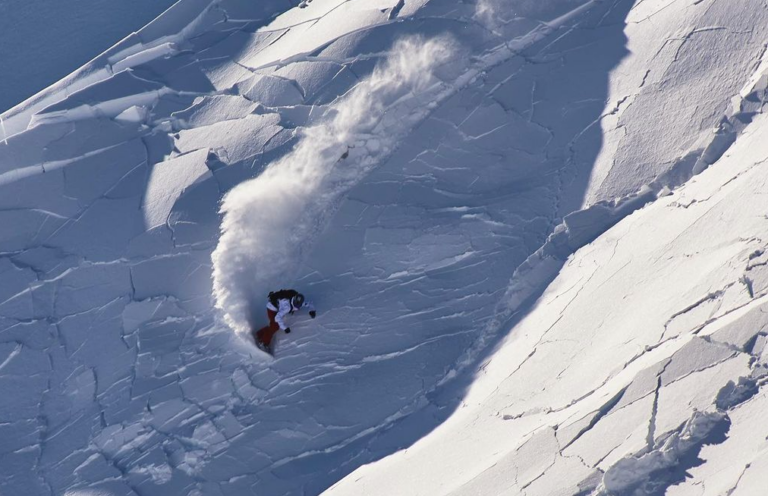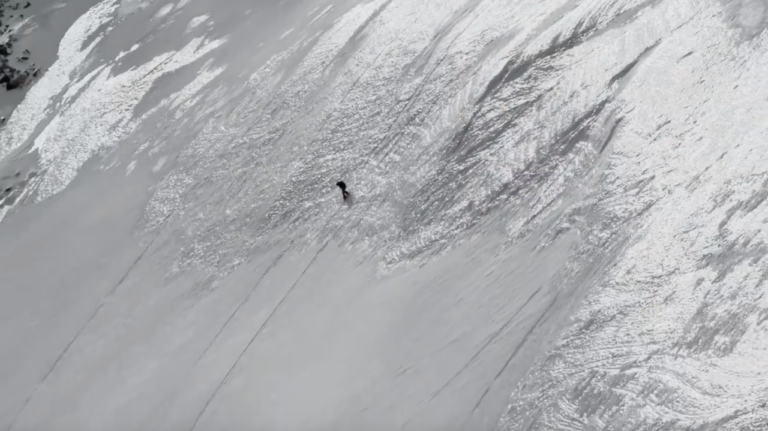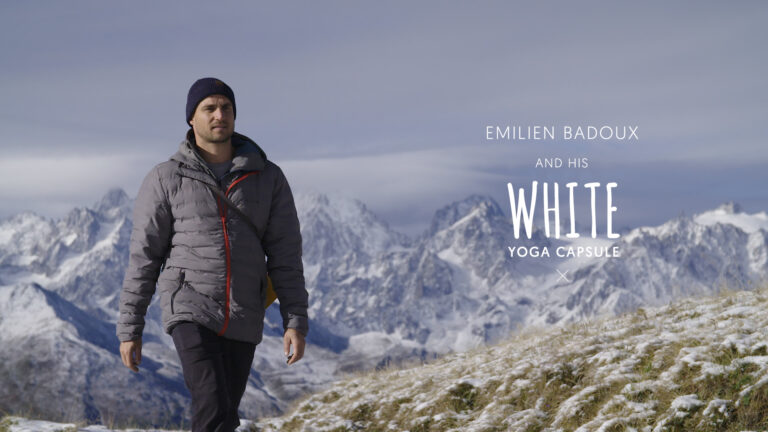![]()
Away from the groomed runs, ‘off-piste’ terrain can include anything from wide-open bowls and sweeping trees to tight chutes packed with glistening powder. But what do those freeride terms actually mean? Well as a beginner you’re going to come across a lot of terminology when you start out, and chances are it’ll all sound pretty confusing at first. So here’s a brief freeriding lexicon to help you out…
From Whitelines Basics 2013
Avalanche
…the most dangerous thing on the mountain:
Each time there’s a snowfall, it forms a new layer on top of the existing snowpack. Depending on a variety of factors including air temperatures throughout the season, the size and shape of the snowflakes and the wind direction, these layers can either fuse together securely or become ‘unstable’. Occasionally a rider turning down a face can be enough to disturb the snowpack, and the whole thing cracks and slides down on top of the weak layer. This is an avalanche. Scientists spend years studying them and still can’t predict for certain when or where they will occur, so if you’re in any doubt about a powder run, walk away.
Backcountry
Backcountry refers to terrain that is beyond the normal resort boundaries. You can’t get to it from the lift; instead the backcountry can be accessed using a splitboard, snow shoes, snowmobile or a helicopter. If it’s open faces, huge kicker spots, untracked pow and chutes you want, the backcountry is where it’s at. Unfortunately, it’s also where most riders get themselves in danger, since there is no avalanche control, no ski patrols and no back-up.
Off-piste
Off-piste means anywhere outside the groomed runs, but usually refers to the easily-accessible areas between marked pistes rather than full-on backcountry (see above).
Slackcountry
Is the latest buzzword in the snowsports industry. It describes the area surrounding a resort that is accessible by its lifts but not on the piste map. It’s halfway between off-piste, and full backcountry.
Splitboard
This is a snowboard that has the ability to split lengthways into two separate skis, enabling the rider to easily access terrain not served by lifts. Once he or she has ‘skinned up’ to the summit, they are then put back together to snowboard down the mountain.
Skins
Skins are pieces of carpet-like material that stick to the base of each splitboard ski. Originally made of seal skin (but now synthetic) they grip the snow and stop you from sliding backwards when you are climbing uphill.
Directional snowboard
A directional snowboard features a slightly longer and higher nose than tail, for superior floatation in powder snow.
Fish
Radically tapered snowboard inspired by surf shapes, designed exclusively for riding deep snow. The nose is much wider than the tail.
Swallow
A snowboard featuring an inverted ‘V’ cut into the tail, encouraging it to sink in deep snow. First popular in the 80’s, swallow-tails are making a comeback as people experiement with pow-specific shapes.
Freshies
Turns in fresh powder. One of the best things you can do on a snowboard – and once you’ve done one, an addiction that’ll steal your time, money and friends.
Rooster
The cloud of spray you send out the back of your board when turning down a powder face, like a rooster’s tail. Faster, longer turns plus deeper snow equals a bigger rooster!
Sluff
A mini avalanche usually triggered on steep faces, in which the top layer of snow starts to slide down the face with the rider. Sluffs can be pretty dangerous (they can knock you off your board) but they’re unlikely to bury you and are therefore not as scary as a full avalanche. How to differentiate between the two? Sluff leaves a trail of light debris over the surface of the snowpack, whereas an avalanche usually breaks off into large blocks, leaving a distinct ridge (or ‘crown’) in the snowpack where the main bulk of snow has fallen away.
Spring Snow
As the name implies this is snow that you get late in the season. Heavy but soft, it is effectively untouched slush and is really good fun to ride. If you can’t ride powder, then spring snow (sometimes called ‘corn snow’), is a good substitute.
Couloir
Or ‘chutes’ as they call ‘em in North America, are narrow corridors of snow through cliff bands that are often steep and dangerous but also harbour pockets of good snow. Straightlining couloirs can be brilliant fun, if not a little hair-raising.
Cliff
A large rock band.
Cliffs out
When a slope ends in a cliff.
Skiers left or right
When discussing a line, this refers to the direction if you were heading //down// the slope. e.g. “I’ll go skier’s left of that rock”
Looker’s left or right
Refers to a direction as you are looking up at the slope from the bottom. “e.g. Do you see the rock on looker’s left?”
Cornice/Windlip
An overhanging ledge of snow, formed when wind-blown snow creates a half-arch on the leeward side of a ridge.
Arret
A thin, narrow ledge separating two slopes, usually at the top of the mountain. Often called ‘knife-edged arrets’ as they can be exceptionally sharp.
Exposed
If a slope is steep, or gets steeper and/or cliffs out as it goes downhill, it is said to be ‘exposed’.
Dust on Crust
Bad snow conditions that are essentially little more than a light dusting of fresh on top of ice, and yet give the illusion of a powder field.
Slash
Any kind of aggressive powder turn move where you destroy a natural feature and send up loads of spray. Surprisingly fun.

